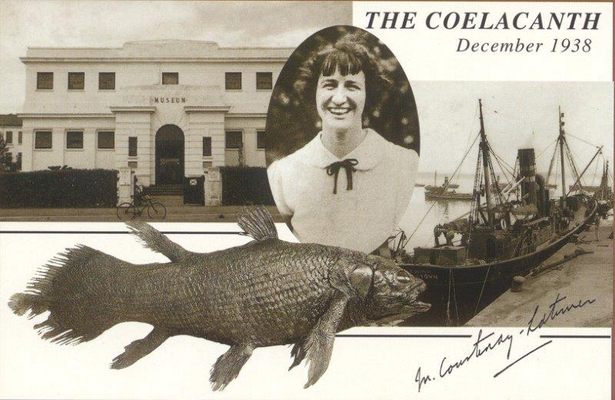About
The coelacanth fish has inhabited the ocean for over 350 million years and was once thought to have gone extinct at the end of the Cretaceous period. However, on December 22, 1938, a living specimen was discovered among the catch of a fisherman in South Africa.
A curator at East London Museum, Marjorie Courtenay-Latimer avidly collected local naturalistic specimens, such as rocks, feathers, and shells. One day, she received a call from a local angler, Captain Hendrick Goosen, who caught a large, strange fish off the Chalumna River. It was, to quote Courtenay-Latimer, "five feet long, a pale mauvy blue with faint flecks of whitish spots" and "covered in hard scales, and it had four limb-like fins and a strange puppy dog tail."
She immediately tried to contact her friend J. L. B. Smith, an ichthyologist at Rhodes University, but he was away at the time and Courtenay-Latimer reluctantly sent the specimen to a taxidermist to preserve it. When Smith finally arrived next February, he recognized the prehistoric fish at once. He gave it the scientific name Latimeria chalumnae, commemorating his friend and the Chalumna River.
Although not quite a popular tourist destination, the location of this enormous discovery has also been commemorated with Courtenay-Latimer's name. A plaque at Latimer's Landing, a small area by the Buffalo River, explains its namesake and marks the spot where the coelacanth was brought back to life.
Related Tags
Community Contributors
Added By
Published
June 3, 2021






















